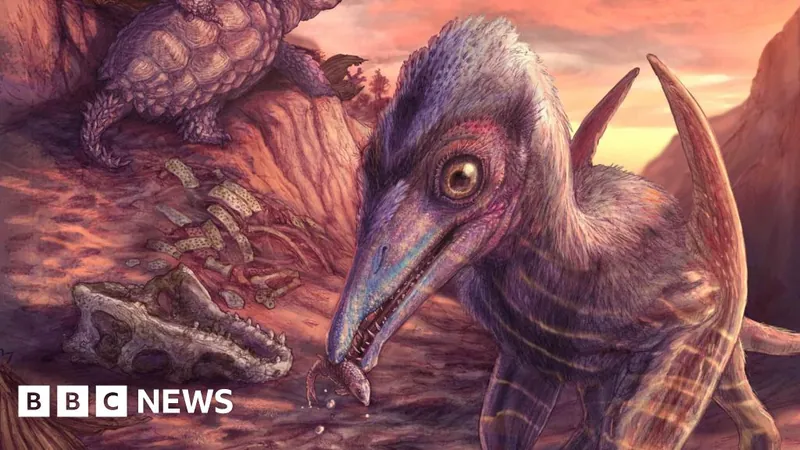
Ancient Jawbone Unveils New Species of Pterosaur: Meet Eotephradactylus mcintireae!
2025-07-07
Author: Rajesh
A Stunning Discovery from the Past
In an astonishing revelation, scientists have unveiled a new species of pterosaur, a magnificent flying reptile that ruled the skies over 200 million years ago. This groundbreaking discovery was sparked by the jawbone of the ancient creature, unearthed in Arizona back in 2011. Modern imaging techniques have finally confirmed that this fossil represents a species previously unknown to science.
Introducing Eotephradactylus mcintireae
The research, spearheaded by experts at the Smithsonian's National Museum of Natural History, has dubbed this newly identified species Eotephradactylus mcintireae, which translates to "ash-winged dawn goddess." This evocative name pays homage to the volcanic ash that preserved the pterosaur's bones in the ancient riverbed where they were found.
North America's Most Ancient Pterosaur?
At a staggering age of approximately 209 million years, Eotephradactylus mcintireae is now believed to be the earliest pterosaur discovered in North America, a fact that could reshape our understanding of these incredible creatures.
Preserved in Time
Located in the Petrified Forest National Park, the fossil site was once a bustling riverbed, where layers of sediment worked their magic to trap and preserve bones, scales, and various remnants of life during the Triassic period. Dr. Kligman explained how the delicate bones of Triassic pterosaurs are often destroyed before they can fossilize, making this discovery particularly exciting.
Not Just a Jawbone
The jawbone is just one piece of a treasure trove of fossils discovered at the site. Researchers uncovered not only bones and teeth but also fish scales and even coprolites (fossilized droppings) that offer a unique glimpse into the ecosystem of the time.
Feeding Habits and Ecosystem Dynamics
The study of Eotephradactylus mcintireae's teeth has revealed intriguing insights into its diet. Dr. Kligman noted that the wear patterns on its teeth suggest it was likely munching on primitive fish protected by bony scales. This points to a complex dietary adaptation in early pterosaurs.
A Snapshot of Ancient Life
This remarkable fossil site acts as a snapshot of a prehistoric world bustling with life, hosting not only long-extinct creatures like giant amphibians and ancient, armored crocodilians but also ancestors of modern-day frogs and turtles.
Connecting the Dots in Evolution
Dr. Kligman emphasized that these fossil beds provide critical evidence for understanding the evolutionary transitions that occurred 200 million years ago. They illuminate how disparate animal groups coexisted, weaving a rich tapestry of Earth's ancient biosphere.


 Brasil (PT)
Brasil (PT)
 Canada (EN)
Canada (EN)
 Chile (ES)
Chile (ES)
 Česko (CS)
Česko (CS)
 대한민국 (KO)
대한민국 (KO)
 España (ES)
España (ES)
 France (FR)
France (FR)
 Hong Kong (EN)
Hong Kong (EN)
 Italia (IT)
Italia (IT)
 日本 (JA)
日本 (JA)
 Magyarország (HU)
Magyarország (HU)
 Norge (NO)
Norge (NO)
 Polska (PL)
Polska (PL)
 Schweiz (DE)
Schweiz (DE)
 Singapore (EN)
Singapore (EN)
 Sverige (SV)
Sverige (SV)
 Suomi (FI)
Suomi (FI)
 Türkiye (TR)
Türkiye (TR)
 الإمارات العربية المتحدة (AR)
الإمارات العربية المتحدة (AR)